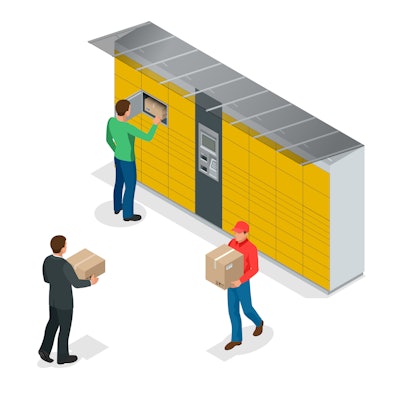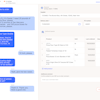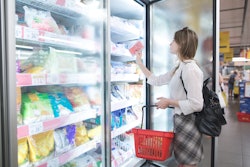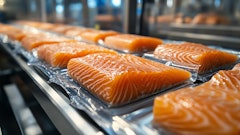
Think back to life before the Coronavirus disease (COVID-19). For example, imagine going to the gym. For many, that early morning spin class has since been replaced by at-home fitness equipment. That’s because working out at home provides a safe, contactless experience alongside a professionally-led, quality workout.
The same safety, quality and convenience also applies to food. Enter food lockers, a way food and beverage purveyors can ensure the delight of their customers while maintaining the safety and integrity of their goods.
The concept of food lockers is relatively new to the United States, but elsewhere in the world, particularly in Europe and Asia, food lockers have been very popular for several years.
Just a few short years ago, U.S. food lockers were a novel concept, but far from a necessity. But, here we are, in the middle of a pandemic, and food lockers are having their rightful moment. Necessity has fast-tracked innovation in contactless, safe options in nearly every business sector, including payments. Payment processing, for example, has come a long way in just the past year, making food lockers not just safe and convenient, but a viable option for purveyors and restaurants.
A perfect storm of innovation and technology coming together at the same time helped make the contactless experience better for all involved, leaving food safety, quality and accessibility as the remaining hurdles to delighting customers with food delivery.
Third-party problems
If you’re in the food delivery business, safety should be your No. 1 priority. It’s the top priority for the entire culinary community, yet for some reason, we let people with no food handling experience, training or certifications deliver food through third-party services. Think about how often your restaurant is inspected. You’d like to imagine that food delivery services are held to the same standards, but they’re not.
Their massive fees make them bad for restaurants’ bottom lines, the inconsistency and lack of quality make them bad for your brand and the non-existent safety measures and lack of oversight make them dangerous for consumers.
Let’s follow a meal from the time it’s created to the time it’s delivered to a customer’s front door. Even under the best of circumstances, perhaps it waits 15-20 minutes in the restaurant before the driver retrieves it for delivery. Then, as the driver makes 3-4 other stops before your customer’s building, it’s sitting in a car - or in a bike basket - for another 30-45 minutes. Then, the driver arrives at the home, where it waits to be picked up by the customer who paid a 30-50% premium to have it delivered.
Accessibility, quality and convenience
Food lockers, particularly temperature-controlled ones, are a safer way to deliver quality food while ensuring the integrity of the culinary brand remains intact.
Food lockers are also an accessible way for restauranteurs or other food and beverage purveyors to reach more folks. Think about cafeterias across the country that have been closed for a year now, and all the hungry students who could instead have fresh, healthy options in a food locker in their dorm lobby, or the hybrid workplace looking for contactless, safe lunch options for its in-office employees. And, since many food lockers are waterproof, what about out at the soccer fields when families spend time there for an entire weekend? Imagine the value-add for a hotel with no in-house restaurant or quality options nearby.
Another big hurdle when it comes to lockers or even vending options is the misconception the only offerings are unhealthy, stale options. Rather, food lockers can preserve the integrity of food. For companies that manage lockers and have their own supply chains, this ensures safe delivery of food kept at the proper temperature for both safety and quality.
Before the pandemic, most Americans were ordering delivery infrequently enough that they probably weren’t too concerned with the safety aspect, or more likely, weren't’ really even thinking about it. We could still go to our favorite restaurants that didn’t deliver, and were none the wiser that this would change. But, it has. While the industry mainly consists of early adopters of food lockers, expect them to become more mainstream as brands see the value add of safer, contactless options.
Consumers have now come to expect convenient, contactless delivery, and the food industry owes it to them to deliver that experience as safely as possible, while preserving the integrity and taste for the enjoyment of the meal itself. For an industry that’s weathered a pretty rough storm this past year, this is a bright spot with the potential to help the restaurant industry emerge even stronger than before.




















